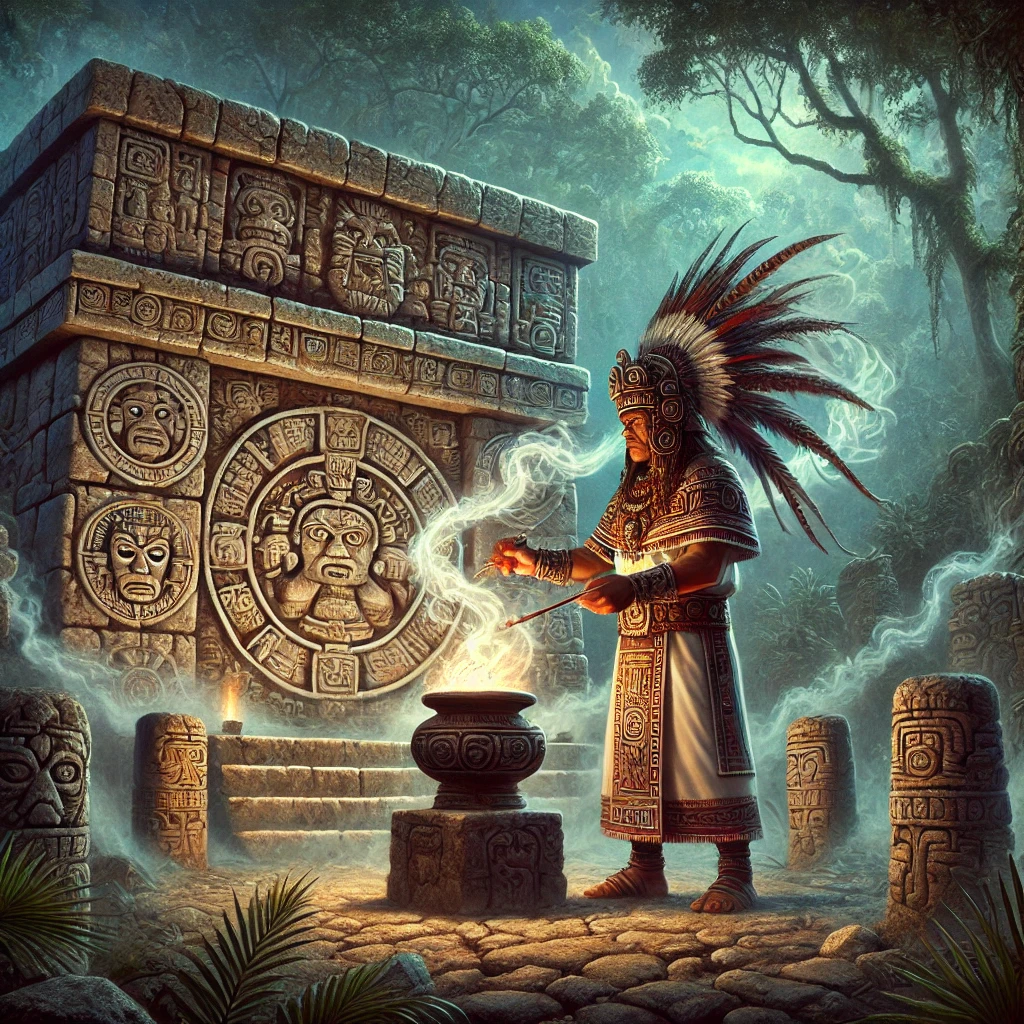The concept of curses and supernatural retribution was deeply embedded in the belief systems of the Maya civilization. Though the Maya didn’t have a term equivalent to “curse” in the modern sense, their spiritual beliefs, rituals, and practices reflected a worldview where supernatural forces could impact human lives. Here’s a brief history of “curseology” in the context of the ancient Maya:
1. Foundations of Maya Spiritual Beliefs
- The Maya believed in a highly interconnected cosmos, consisting of three primary realms: the Upperworld (heavens), the Middleworld (earth), and the Underworld (Xibalba). Each realm was populated by gods, spirits, and ancestors who wielded powers to influence human affairs.
- Powerful deities like Chaac (the rain god) and Yum Kaax (the maize god) could either bless or punish depending on human behavior. To maintain cosmic order, the Maya performed rituals to appease these gods and prevent divine wrath.
2. Curses Through Rituals and Offerings
- The Maya practiced complex rituals to ensure they remained in favor with the gods. However, if certain rules were broken or rituals left incomplete, it was believed that supernatural retribution could follow, impacting both individuals and communities.
- The concept of “ah k’in,” Maya priests, involved ritual specialists who could invoke supernatural forces. These priests were thought to possess the power to both bless and curse, making them key figures in curse-related practices.
3. Xibalba: The Underworld and the Power of Fear
- Xibalba, the Maya underworld, was believed to be a place of darkness and danger, ruled by gods of death and disease. This fearsome place was considered a source of curses, as beings from Xibalba were thought to interfere with the human world.
- According to the Popol Vuh, the Maya creation epic, rulers of Xibalba would often summon individuals to their realm and put them through trials, a mythic representation of how curses and retribution could fall upon those who angered the gods.
4. Royal Curses and Warfare
- Maya rulers claimed divine right and were seen as intermediaries between gods and humans. When rival rulers or communities offended them, it wasn’t unusual for curses to be pronounced upon their enemies, especially after battles.
- Conquered cities were sometimes left with ritual objects that symbolized curse-like consequences for rebellion. Hieroglyphic inscriptions at sites like Dos Pilas and Tikal refer to supernatural punishments on enemies, hinting at ritualized curses tied to warfare and power.
5. Curse Symbols and Glyphs in Maya Writing
- Maya hieroglyphs sometimes include symbols that represented the wrath of the gods or impending misfortune. Some stelae and inscriptions detail prophecies or warnings of what would befall those who defied certain kings or priests.
- Eerie iconography, such as the “death eyes” glyph, symbolized misfortune or curses that could befall cities or individuals who broke societal rules or disturbed sacred sites.
6. Cursed Sites and Sacred Spaces
- The Maya built sacred places such as caves, cenotes (sacred wells), and temples believed to be portals to the underworld. Entering these places without permission or disturbing the relics left there was thought to invoke curses from the spirits.
- Human sacrifices were sometimes performed to placate angry spirits. If these spirits were not properly honored, they were believed to unleash plagues, natural disasters, or personal misfortune on the community.
7. Legacy of Maya Curses in Modern Times
- Some descendants of the Maya still hold beliefs in supernatural retribution. Legends of curses tied to ancient Maya artifacts or sacred sites persist, especially around ruins in Mexico, Guatemala, Belize, and Honduras.
- Archaeological findings, such as tombs and ritual items, are often associated with legends of curses, reflecting the lingering influence of ancient Maya beliefs on contemporary interpretations of Maya “curseology.”
Though not “curses” in the typical Western sense, these practices and beliefs illustrate how the Maya viewed the potential for supernatural retribution as a means of enforcing cosmic and social order. Their complex religious and mythological worldview was inherently tied to the idea that actions—both positive and negative—could reverberate through the spiritual and material worlds, shaping life, death, and the afterlife.
